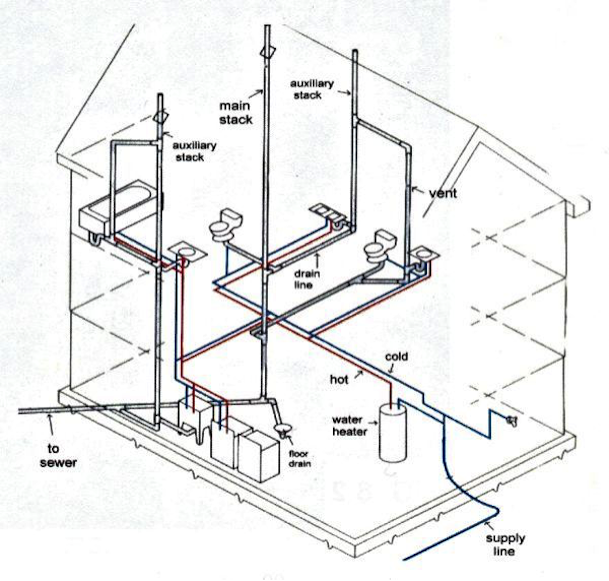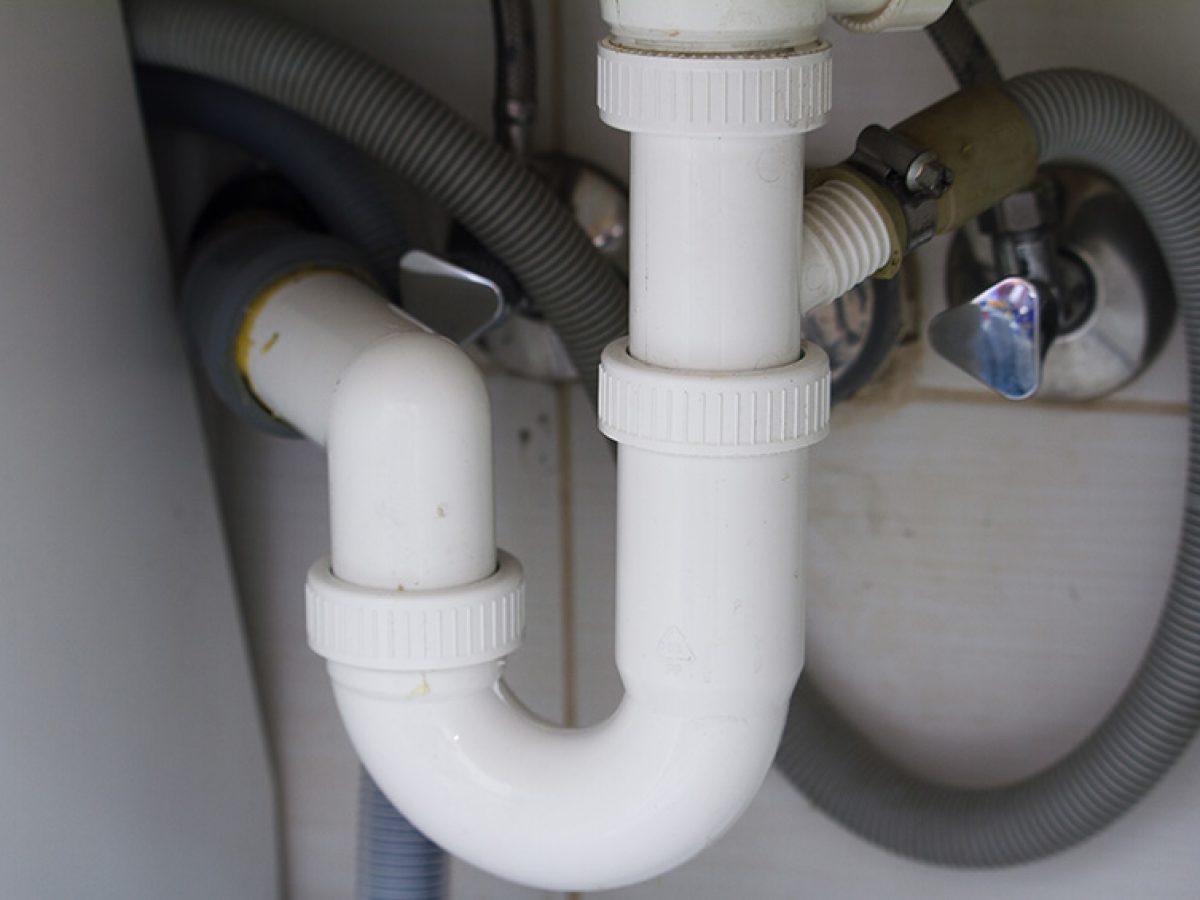What are your beliefs on Exploring Your Homes Plumbing Anatomy?

Recognizing how your home's pipes system works is necessary for every house owner. From supplying clean water for alcohol consumption, food preparation, and bathing to securely getting rid of wastewater, a well-maintained pipes system is critical for your family's health and wellness and comfort. In this comprehensive guide, we'll check out the complex network that composes your home's pipes and offer pointers on maintenance, upgrades, and handling typical issues.
Intro
Your home's pipes system is more than simply a network of pipelines; it's an intricate system that guarantees you have access to clean water and effective wastewater elimination. Recognizing its components and how they collaborate can assist you protect against pricey repair work and make sure every little thing runs efficiently.
Standard Elements of a Pipes System
Pipelines and Tubes
At the heart of your pipes system are the pipelines and tubes that bring water throughout your home. These can be made from numerous products such as copper, PVC, or PEX, each with its benefits in regards to resilience and cost-effectiveness.
Fixtures: Sinks, Toilets, Showers, etc.
Fixtures like sinks, toilets, showers, and bathtubs are where water is used in your home. Understanding how these fixtures connect to the plumbing system aids in detecting troubles and planning upgrades.
Shutoffs and Shut-off Factors
Shutoffs manage the flow of water in your plumbing system. Shut-off valves are crucial during emergencies or when you need to make repairs, permitting you to separate parts of the system without interrupting water flow to the whole residence.
Water System System
Main Water Line
The main water line connects your home to the metropolitan water system or a personal well. It's where water enters your home and is distributed to various components.
Water Meter and Pressure Regulator
The water meter actions your water use, while a pressure regulatory authority guarantees that water flows at a secure stress throughout your home's plumbing system, preventing damages to pipelines and fixtures.
Cold Water vs. Hot Water Lines
Recognizing the distinction between cold water lines, which provide water directly from the main, and warm water lines, which carry warmed water from the water heater, helps in fixing and planning for upgrades.
Water drainage System
Drain Pipes Water Lines and Traps
Drain pipes lug wastewater away from sinks, showers, and commodes to the drain or septic system. Traps stop sewer gases from entering your home and additionally trap particles that could create clogs.
Air flow Pipelines
Ventilation pipelines allow air right into the drain system, protecting against suction that might slow down water drainage and trigger catches to empty. Appropriate ventilation is vital for maintaining the integrity of your pipes system.
Significance of Appropriate Drainage
Guaranteeing correct drainage avoids back-ups and water damages. Frequently cleaning up drains and keeping traps can avoid pricey repairs and prolong the life of your pipes system.
Water Heating System
Sorts Of Hot Water Heater
Water heaters can be tankless or traditional tank-style. Tankless heating units warmth water as needed, while tanks keep warmed water for prompt use.
Updating Your Plumbing System
Reasons for Upgrading
Updating to water-efficient components or changing old pipelines can improve water quality, decrease water expenses, and boost the worth of your home.
Modern Plumbing Technologies and Their Benefits
Check out technologies like clever leak detectors, water-saving bathrooms, and energy-efficient hot water heater that can conserve cash and reduce environmental influence.
Cost Considerations and ROI
Determine the ahead of time costs versus long-term cost savings when thinking about pipes upgrades. Many upgrades pay for themselves with minimized energy expenses and less repairs.
How Water Heaters Link to the Plumbing System
Comprehending exactly how hot water heater link to both the cold water supply and warm water circulation lines helps in diagnosing issues like insufficient hot water or leaks.
Maintenance Tips for Water Heaters
On a regular basis purging your hot water heater to remove debris, checking the temperature level setups, and inspecting for leakages can prolong its life expectancy and enhance energy efficiency.
Typical Plumbing Issues
Leaks and Their Reasons
Leakages can happen because of aging pipelines, loose fittings, or high water stress. Resolving leakages quickly avoids water damages and mold growth.
Obstructions and Clogs
Blockages in drains and toilets are usually brought on by flushing non-flushable things or a buildup of oil and hair. Making use of drain screens and bearing in mind what drops your drains pipes can avoid clogs.
Indicators of Pipes Issues to Watch For
Low tide stress, slow-moving drains pipes, foul odors, or unusually high water costs are indications of potential pipes issues that must be dealt with promptly.
Pipes Maintenance Tips
Normal Evaluations and Checks
Schedule yearly pipes evaluations to capture issues early. Seek indications of leakages, rust, or mineral buildup in taps and showerheads.
Do It Yourself Maintenance Tasks
Simple tasks like cleansing faucet aerators, looking for toilet leaks utilizing dye tablet computers, or insulating revealed pipes in cool climates can protect against major pipes issues.
When to Call an Expert Plumbing
Know when a pipes concern requires expert knowledge. Trying complex fixings without proper expertise can result in even more damage and higher fixing costs.
Tips for Minimizing Water Use
Basic habits like taking care of leakages immediately, taking much shorter showers, and running complete loads of laundry and meals can save water and reduced your utility bills.
Eco-Friendly Plumbing Options
Consider lasting pipes products like bamboo for flooring, which is durable and environmentally friendly, or recycled glass for counter tops.
Emergency situation Readiness
Actions to Take Throughout a Pipes Emergency situation
Know where your shut-off valves lie and just how to turn off the supply of water in case of a ruptured pipeline or significant leakage.
Importance of Having Emergency Get In Touches With Helpful
Maintain call details for local plumbing technicians or emergency situation solutions conveniently offered for fast feedback during a plumbing dilemma.
Environmental Impact and Conservation
Water-Saving Fixtures and Home Appliances
Installing low-flow taps, showerheads, and commodes can significantly reduce water use without sacrificing efficiency.
DIY Emergency Situation Fixes (When Applicable).
Short-term solutions like using duct tape to spot a dripping pipe or placing a bucket under a dripping faucet can minimize damage till a specialist plumbing technician shows up.
Verdict.
Understanding the composition of your home's plumbing system encourages you to keep it properly, conserving time and money on repair services. By complying with normal maintenance regimens and staying informed concerning modern-day pipes innovations, you can guarantee your plumbing system operates effectively for many years to come.
The Anatomy of Your Home s Plumbing System
Understanding the anatomy of your home s plumbing system is essential for any homeowner. It not only helps in identifying potential issues but also facilitates effective communication with professionals when repairs or upgrades are needed. Your home s plumbing system is more than just pipes and faucets; it s a complex network that ensures the efficient and hygienic flow of water in and out of your house. In this blog, we ll dissect the crucial components of your home s plumbing system. For those in Antelope Valley, Brock Plumbing is your trusted partner for all your plumbing needs, ensuring your system functions smoothly and efficiently.
Water Supply System
- Main Water Line: This is where your home s plumbing system begins. The main water line connects your home to the public water supply or a private well.
- Pipes and Shut-off Valves: Pipes distribute water throughout your home. Shut-off valves are crucial for controlling the flow of water and making repairs without shutting off the entire system.
Drainage System
- Drain Pipes: These pipes carry waste and water away from sinks, toilets, and showers.
- Vents: Vents allow sewer gases to escape and help maintain proper pressure in the drainage pipes, ensuring efficient flow of wastewater.
- Traps: Every fixture has a trap, a U-shaped pipe that holds water and prevents sewer gases from entering your home. The most common is the P-trap under sinks.
Fixtures and Appliances
Fixtures and appliances are the most interacted with parts of your plumbing system. They include sinks, toilets, showers, dishwashers, and washing machines. Each fixture and appliance has its own supply and drainage connection, ensuring they receive clean water and can dispose of wastewater effectively.
Water Heating System
Your water heater is a crucial component, providing hot water to various fixtures and appliances in your home. It can be tank-based or tankless, with each type having its own set of advantages and maintenance requirements. Regular maintenance is essential to ensure efficient operation and extend the lifespan of the unit.
Sump Pump
In areas prone to flooding or with high water tables, a sump pump is an essential part of the plumbing system. It s installed in the lowest part of your basement or crawlspace and pumps out water that accumulates, preventing flooding and protecting your home from water damage.
Septic System
Homes that are not connected to a municipal sewer system have a septic system and an underground wastewater treatment structure. Understanding how to maintain your septic system is crucial to prevent backups, odors, and early system failure.
Conclusion
Your home s plumbing system is a complex and essential network, ensuring the efficient and hygienic flow of water in and out of your property. Understanding its key components helps in maintaining it properly and identifying issues before they escalate into major problems. For residents in Antelope Valley, Brock Plumbing is dedicated to providing top-notch services, ensuring that every part of your plumbing system is in perfect working order. Trust our team of professionals to handle all your plumbing needs, ensuring your home remains comfortable, safe, and well-maintained.
https://brockplumbinganddrains.com/blog/the-anatomy-of-your-homes-plumbing-system/

Do you enjoy more info about ? Try leaving a review down the page. We'd be pleased to hear your ideas about this content. In hopes that you come back again before long. Those who enjoyed our post kindly make sure you remember to pass it around. I praise you for being here. Come back soon.
Book Service
Comments on “Anatomy of Your Home's Plumbing System: Why It Matters”